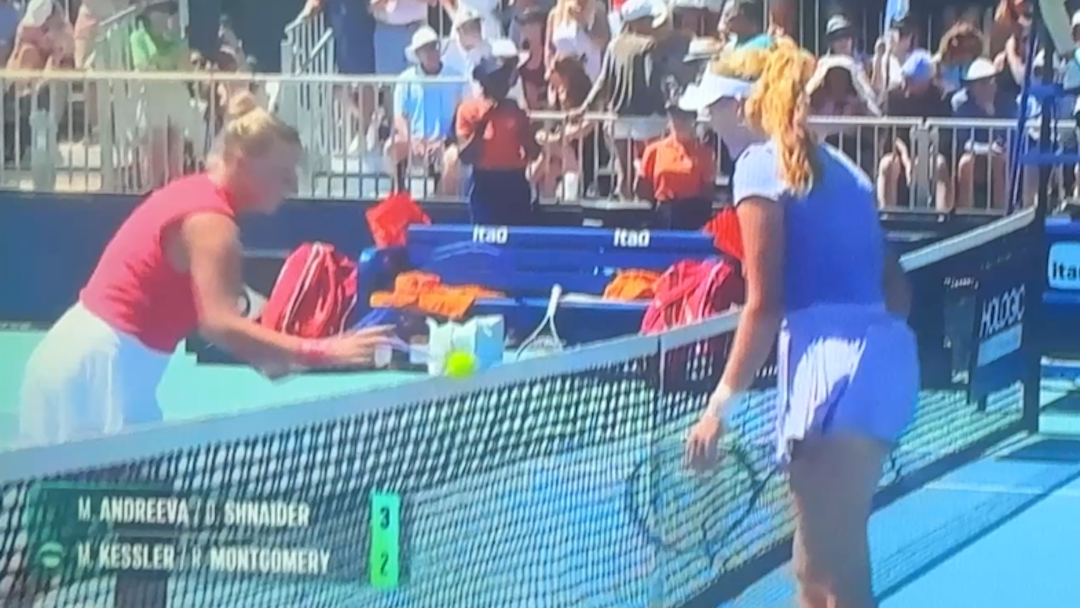In yesterday’s post, I introduced the concept of tennis tournament “point-chasers,” who are players primarily motivated by the opportunity to accumulate ranking points in tournaments. The ranking system and acceptance into exclusive events like the NTRP National Championships and Invitational Masters are powerful incentive systems that drive tennis engagement. However, it is not the only thing that motivates, inspires, and rewards players. For some, the opportunity to compete is the ultimate motivator. While the playing decisions of those players might be influenced by the ranking point system, they are primarily interested in the opportunity to play high-quality matches that push them to their limits. They play tennis for the sheer joy of competition.
Competitive-minded players often enter tournaments to test themselves against strong opponents. To those players, the allure of tournament play is deeply rooted in the intrinsic experience of battling through a tough match, relishing long rallies, and making strategic adjustments. They relish the pressure along with the inevitable battle scars, which they wear like a badge of courage. Competitive-minded players certainly prefer to win. However, their celebrations of mastery are short-lived as they almost immediately turn their attention to their next achievement. Losing is typically greeted by a renewed commitment to improve their skills.
If you delve into the psyche of the top players in Adult senior tennis, the mindset that embodies the love of competition is ubiquitous. It is an inherent attribute of players who grew up playing Junior, collegiate, or even professional tennis who are still engaged with the sport. However, it is not uncommon to find people who took up tennis as an adult also pressing toward a high level of performance. These players thrive on the structure and intensity of tournament competition and the individual tests of skill and endurance that tournament play provides.
Not surprisingly, these ultra-competitive players tend to rise to the upper NTRP levels of the Adult tennis ecosystem, where the number of players thins out considerably. At the highest tiers of play, the number of people who have achieved high performance in tennis becomes increasingly limited, making it more difficult for elite players to find meaningful match opportunities. USTA League, while an excellent playing outlet for most people, requires a baseline number of players to create and sustain competition.
Once a player outperforms the upper limits of their local league, tournaments should be the next logical step. Indeed, if the tournament ecosystem were healthy it would be the primary solution for those highly skilled players who no longer fit neatly into the league framework. Unfortunately, tournaments aren’t consistently attracting enough participants, and some divisions rarely have draws make at all. As a result, many top-tier players face a frustrating dichotomy. They either have to travel extensively to find suitable competition or find another outlet that feeds their competitive drive. Without adequate engagement mechanisms, many simply drift away from the sport.
While I have been writing about how players are motivated by the tournament ranking system and the love of competition as separate topics, the reality is these two incentive systems should work hand in hand. The tournaments with higher ranking points draw more players, so naturally the competitive players are attracted to those events. Additionally, as the tournament progresses, the caliber of players rises. It is the essence of tournament play.
The challenge is that with few exceptions, only the Level 1 tournaments are attracting a significant number of players. The challenge facing the Adult tennis ecosystem is finding a way to attract players to tournaments at all levels. The vast majority of senior adult players shouldn’t have to take expensive and long arduous journeys to play the sport, but that is the current reality.
A robust competitive tennis ecosystem must include a well-structured pathway for highly skilled players to continue their pursuit of mastery. Without a system that consistently provides meaningful match opportunities at all levels, we risk losing the very players who embody what sport is all about—improving, evolving, and pushing boundaries. If we fail to serve these players, their “why” in tennis—the drive to compete and excel—can quickly shift into “why am I even bothering?” When that happens, the entirety of the competitive tennis ecosystem suffers.



